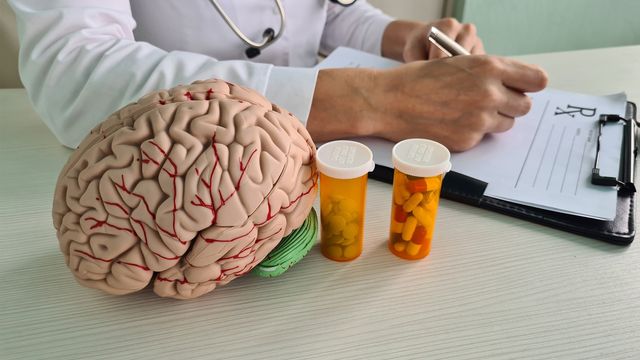In one of the largest studies of its kind, researchers tracked over 148,000 people with attention deficit hyperactivity disorder (ADHD) to see if medication use was linked to changes in risks such as self-harm, substance misuse and crime.
The Swedish study published in The BMJ found that medication was associated with reduced rates of several serious outcomes.
ADHD prevalence, treatment and research gaps
ADHD affects ~5% of children and 2.5% of adults worldwide. It is most often diagnosed in childhood, but symptoms such as inattention, impulsivity and hyperactivity can persist into adulthood. These symptoms can lead to problems beyond school or work performance. People with ADHD have higher rates of suicidal behavior, substance misuse, accidental injuries, transport accidents and criminal convictions compared with the general population.
Treatment can involve behavioral therapy, medication or both. Stimulants such as methylphenidate and amphetamines are often the first choice, with non-stimulants including atomoxetine or guanfacine used in some cases. Prescriptions for ADHD drugs have risen sharply worldwide, a rise that has fuelled debate about how effective these medications are in the long term – and whether their benefits extend beyond easing core symptoms.
Randomized controlled trials (RCTs) show that ADHD drugs help reduce symptoms. However, RCTs rarely measure broader outcomes such as reduced risk of self-harm or criminality. They also often exclude many people with ADHD seen in everyday clinics, meaning results may not represent the wider population. Observational studies using healthcare data have suggested possible wider benefits. Still, these studies can be biased if they only include people already affected by adverse events or fail to account for changes over time.
To address these gaps, researchers in Sweden conducted the first nationwide target trial emulation to test the effects of ADHD drug treatment on wider risks.
Target trial emulation
Target trial emulation is a research method that uses existing observational data to mimic the design and analysis of an RCT, aiming to reduce bias and produce results that are more comparable to trial findings.
Swedish researchers assessed the impact of ADHD medication using national data
The study used data from Swedish national registers collected between 2007 and 2020. Researchers identified 148,581 people aged 6–64 years with a new ADHD diagnosis. They compared two groups: those who began ADHD medication within three months of diagnosis and those who did not.
The trial emulation approach applied the principles of an RCT to real-world observational data, helping reduce bias. Participants were followed for up to two years after diagnosis. The team looked at five outcomes: suicidal behaviors, substance misuse, accidental injuries, transport accidents and criminality. They examined both first-time events and repeat events.
Methylphenidate was by far the most common starting drug, prescribed to 88.4% of people who began treatment.
For first events, ADHD medication was linked to lower rates of four outcomes: suicidal behaviors (17% lower), substance misuse (15% lower), transport accidents (12% lower) and criminality (13% lower).
For repeat events, reductions were seen across all five outcomes: suicidal behaviors (15% lower), substance misuse (25% lower), accidental injuries (4% lower), transport accidents (16% lower) and criminality (25% lower).
Benefits were greater in people who had already experienced these adverse events before diagnosis. Stimulant medications were linked to larger reductions than non-stimulants. Adults had greater reductions than youths for substance misuse and criminality, while females had a larger drop than males in first criminal convictions.
ADHD drug effects, study limits and future research
The findings suggest that ADHD medication may be linked to reductions in several serious risks, effects that were seen in both children and adults, and in males and females. While the study adds weight to guidelines that already place stimulant medication as a first-line option, the authors stress that these results are observational and cannot prove cause and effect. They may also contribute to ongoing discussions, such as whether methylphenidate should be included in the World Health Organization’s essential medicines list.
The study did not include information on behavioral or psychological treatments; therefore, the results compare medication use with “usual care” rather than with a placebo. Some people may not have taken their medication as prescribed, which could dilute the measured effect. The analysis also did not account for dosage differences or ADHD subtypes, and unmeasured factors such as severity of symptoms or lifestyle could still influence the results.
Future work could include long-term trials in more representative populations, assessing not just symptoms but a wider range of life outcomes. Studies that examine combined drug and non-drug approaches would also be valuable.
“It’s important to understand the risks and benefits of ADHD medication use, to give people informed choices about what they use to support themselves or their children,” Dr. Adam Guastella, an expert in mental health research and the Michael Crouch Chair in Child and Youth Mental Health at the University of Sydney, told the Science Media Centre.
“People can spend a long time seeking a diagnosis and discussing treatment, and the investment of time needs to be worth it and evidence-based. So, it’s important to understand the breadth of possible impact. It’s always helpful to know if medications can impact daily life beyond reducing symptoms. This information is also important for government, to help policy makers understand the potential benefits of treatment for broader society, such as mental health or criminal outcomes,” he added.
Reference: Zhang L, Zhu N, Sjölander A, et al. ADHD drug treatment and risk of suicidal behaviours, substance misuse, accidental injuries, transport accidents, and criminality: emulation of target trials. BMJ. 2025. doi: 10.1136/bmj-2024-083658
This article is a rework of a press release issued by BMJ Group. Material has been edited for length and content.
